Turning those bitter tasting nuts that are found all over the place during the fall into something that is not only palatable but rather good tasting is not as difficult as one would think.
In this post I’ll be demonstrating how to turn acorns into an awesome food source.
Step 1: Gather the Acorns
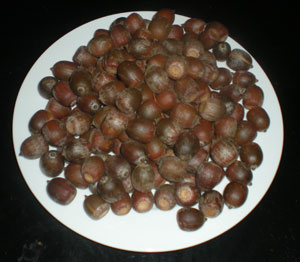
The first step is rather self-explanatory. But for the sake of being thorough I’ll go through it.
While you can collect them directly from the tree, the best place to gather acorns is right under the tree when they fall. Of course, the earlier you can grab these in the fall the better since you’ll be competing with all the other nut-loving creatures (squirrels, chipmunks, deer, acorn weevils, and other survivors besides you ;)).
Step 2: Shell the Acorns
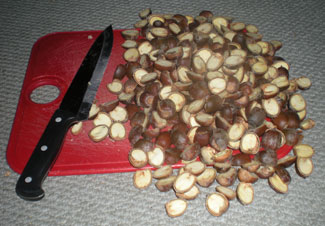
Similar to other nuts, you’ll need to remove the shell of the acorns before you can consume them. There are different ways to do this: Nutcracker, pounding it with a hammer and removing the nut meat, or my favorite way is a two-step process: first cut them all in half with a large kitchen knife and then work at popping out the nut meat using the sharp point of a smaller knife.

Step 3: Pulverize the Nut Meat
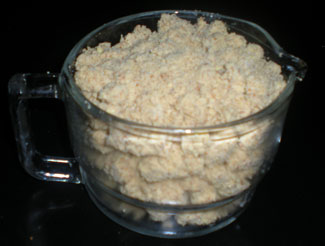
Now that you have all the nut meat out of the shells, you’ll want to grind these down as fine as possible. The old way is to use a big flat rock as your surface (acts as a mortar) and a smaller round rock used to crush and grind the nut (the pestle) into a fine consistency. Since I like to train in the old way but still use technology when possible, I like using my Greenstar juicer or a food processor. The nuts are softer than peanuts and will not damage these appliances.
Step 4: Leech the Tannins out of the Acorns
All the acorns that I’ve processed (yes, even white oak) required that I leeched the bitter tannins out of them before gobbling them down.
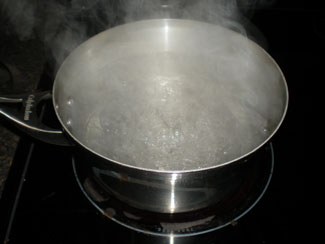
To do this, bring a pot of water to a boil and pour the acorn meal in it. Let it boil for 5+ minutes making sure to stir the pot so that some of the acorn meal doesn’t stick and burn at the bottom.

As an FYI, you could have skipped step 3 and just continued with this step, however I find that it takes way too long to process and wastes too much fuel. By using the ground up meal, it provides a greater surface area and leeches out the tannins much faster.
Step 5: Filter out the Acorn Flour from the Water
After your initial boil, filter out the acorn flour with a cheesecloth or an old t-shirt (even a sock will do in a pinch). I like to place a colander in my sink and then place the t-shirt or cheesecloth over the colander making a bowl-like depression with it.
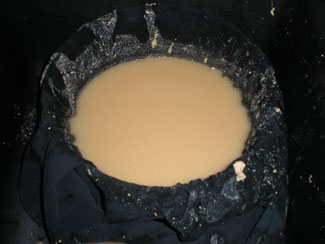
After pouring the liquid into the cloth depression, be careful with the hot water. It’s best to pour cold water into the slurry until it cools off and you can then pick up the cloth filter to help strain the remaining water out.
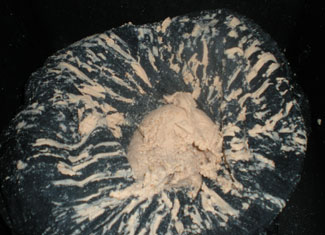
After filtering, you’ll want to do a taste test. Is it still bitter? If so, repeat steps 4 and 5 until the bitterness is out.
Final Steps
At this point you’re left with essentially a ball of acorn-flour dough. If you want you can use this right away or if you want to save it for later, you can dry it out.

To dry it out, simply spread it out flat onto a cookie sheet and place it in the oven at the lowest temperature until it is completely dry, or do the same thing but instead place it outside (this takes longer). Placing it in a food dehydrator also works great.
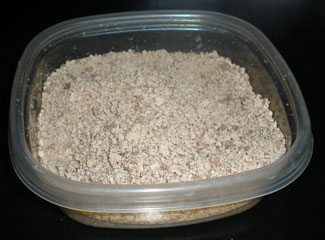
After it has dried out you’ll probably notice that it has caked together (this is due to the high fat content). You can store it as is or further process it by crushing it into a powder (by hand or food processor). This acorn flour can then be used to make pancakes, bread, or added to cereals or soup.
Acorn Nutrition Information
Acorns are surprisingly nutritious and sustaining. Here’s the general nutrition info for 1 oz of dried acorn meal:

Source: Tactical Intelligence

